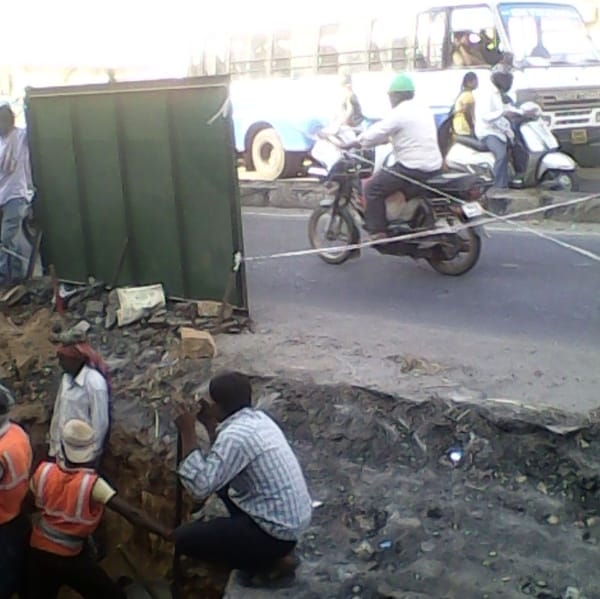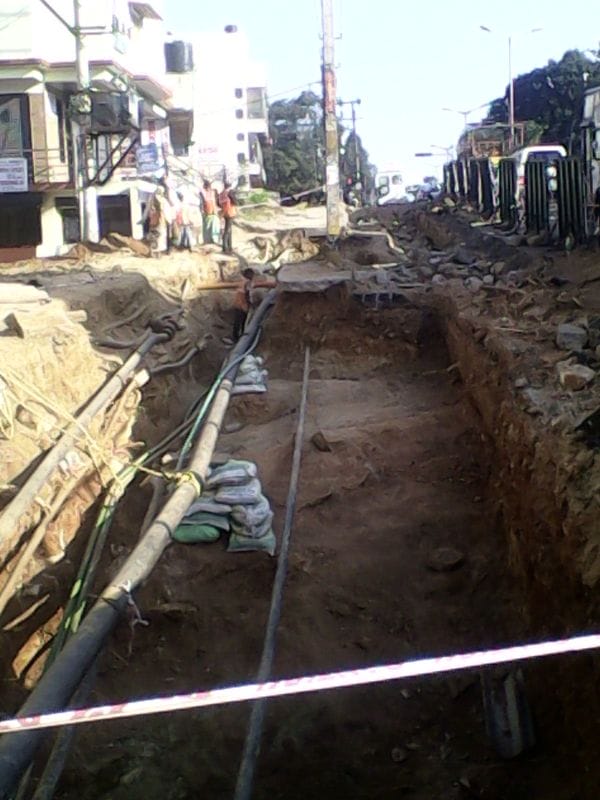It was supposed to be a quick route to get to South Bengaluru from the western part of the city, which it was during the 90s, when the portion of Ring Road linking Bannerghatta Road to Mysore Road opened. I was pursuing my post-graduation at a business school in JP Nagar then and would manage to reach Banashankari and JP Nagar that were next to the same road, in just half an hour from Vijayanagar even in the early 2000s.
However, things started going downhill around 2003. My rides got longer. I relocated to Hyderabad in 2004 and was relieved of the travails of driving on this road for a good two yeaRs In 2006, when I came back to Bengaluru, I realised with a shock that things had changed for the worse.
I would use this route to get to Electronics City from Vijayanagar. Thanks to the company transport, I did not have to ride a bike as in the past, but the journey was strenuous. The Government did think about decongesting Hosur Road by building an elevated road but the congestion on the stretch from Bannerghatta Road to Mysore road was not given any serious thought. We also had to endure a very painful ride on the BTM Layout main road after crossing the Silk Board junction while coming from Electronics City.
Enter ‘signal-free’ roads, multi-level flyovers, Metro
There was a change of government in 2008 followed by the realisation that Ring Road was indeed as congested as any other road in the city. All of a sudden, we saw the government swinging into action and a decision was taken to make this road signal free, soon after residents protested against the proposed widening of this road.

Digging in Process for underpass construction at Muthuraj Junction. Pic: Amith Pallavoor Subramaniam
We first saw the construction of underpasses at Kadirenahalli and Puttenahalli. The Puttenahalli underpass was built at a cost of Rs 22.99 crore and the Kadirenhalli underpass was built at a cost of Rs 28.72 crore. The projects began in 2008 and Puttenahalli opened in December 2010. The construction on Kadirenahalli underpass went on for a long time, and it was finally opened to the public in 2012. Ostensibly, the delay was on account of land acquisition issues. Kadirenahalli underpass was also built on a steep gradient.
The quality of construction also left a lot to be desired. There is water logging at Puttenahalli and craters have appeared at Kadirenahalli. The delays also meant that the contractors were fined. A fine of close to Rs 3 crore was imposed on the firm M/S EPIL which built the Puttenahalli underpass, while M/S Madhava Hytech and M/S Brahmaputra, the firms which built the Kadirenahalli underpass, were slapped penalties of Rs 75 lakh.
Meanwhile, I got married and shifted to Rajarajeshwari Nagar and my work place was at VV Puram. But my trouble with under-construction flyovers was clearly not over. The Nayandahalli junction on ORR saw the construction of the landmark two-level flyover, built at a cost of Rs 86.75 crore, dragging on from 2010 to 2015. The delay in construction could have been avoided had the three agencies executing the flyovers and the Bengaluru Metro had better coordination among themselves.
The Bruhat Bengaluru Mahanagara Palike (BBMP), Bengaluru Development Authority (BDA) and Bengaluru Metro Rail Corporation Limited (BMRCL) were all involved in construction activities in the stretch from 2010 to 2015. In fact, the state pollution control board sent a notice in 2013 to the BDA, BBMP and BMRCL on the issue of pollution at the construction sites. Needless to say, property acquisitions also delayed the execution of the project.
The construction that goes on forever
The joy of seeing the construction on this stretch end was once again short-lived as the Deve Gowda petrol bunk junction, with an estimated carrying capacity of 10000 PCU (passenger car unit), was to get a 325-metre flyover. It is being executed by M/S Venkatrao Infrastructures at a cost of Rs 35.8 crore.
Work on this flyover started in January 2014 and is still going on. If media reports are to be believed, this flyover should be ready by December 2016. The project was initially slated to be completed in 18 months but got delayed as BBMP and BWSSB allegedly did not shift their utilities in time.
The same company has also received a contract of more than Rs 100 crore from the BBMP. This is part of the municipal body’s effort to ensure a signal free ride from Bannerghatta Junction to Mysore Road on ORR. The project involves construction of a unidirectional flyover at KEB Junction, a bi-directional underpass at Dr. Muthuraj Road Junction, a bi-directional underpass at Food World Junction, a bi-directional flyover at Dollar’s Colony Junction and another one at Jedimara Junction.

Utilities being shifted for the underpass at Muthuraj Junction. Pic: Amith Pallavoor Subramaniam
I travel on this road almost every day and I see that the unidirectional flyover at KEB Junction and the bi-directional underpass at Dr. Muthuraj Road Junction are already under construction. This has added to the woes of the commuter along with the under-construction flyover at Deve Gowda Petrol Bunk junction.
Apart from people commuting between the western part of the city to South Bengaluru, the ORR is also used by people living in South West Bengaluru (Mysore Road, Uttarahalli Road) to travel to the southern and south-eastern parts of the city such as Jayanagar, Basavangudi, Koramangala and HSR Layout. The commencement of construction of flyovers/underpasses at the aforementioned junctions, without completing earlier ones, has resulted in unnecessary detours and added to the delay in commute time and congestion in residential areas which lie parallel to the Ring Road.
It is in the city’s interest to consult and engage not just the residents of a particular area but also the users of the roads when large scale projects of this nature are executed. It would also make sense if the civic authority sent out updates on the status of construction of flyovers/ underpasses on a regular basis. Increased public participation and public awareness could also result in faster execution of projects.
For now, however, it looks like the residents of Banashankari, JP Nagar, Girinagar and parts of Jayanagar will have to put up with endless construction on this stretch.
Why not consult public before conceiving projects?
The government is also planning an elevated light rail system on this stretch at a cost of nearly Rs 11,000 crore. This rail system, in addition to linking JP Nagar to Hebbal, shall also provide last mile connectivity to users of Metro’s Pink and Green Line from Banashankari and Girinagar. There is also a 10-kilometre link planned from Magadi Toll Gate to Peripheral Ring Road.
While these announcements are welcome, they also raise questions over what the government‘s priority is—private vehicles or Mass Rapid Transit Solutions? (MRTS) If Light Rail Transit System (LRTS) was indeed the need of the hour, why was so much public money spent on grade separators and signal free corridors?
Projects of this nature run into hundreds of crores. It is not just about the money but also about the lovely old trees on this stretch. There has been a concomitant increase in dust, pollution and ambient temperature in residential areas surrounding the construction sites. Commuters are increasingly vulnerable to all kind of dust allergies and ailments during the construction phase.
A long term solution to the construction woes in ever-burgeoning Bengaluru could be achieved through public consultation and participation of citizens concerned. A project thus executed has greater chances of completion on time. More importantly, there is transparency. There is also the angle of environmental and aesthetic factors to be considered. It is important that a consensus is achieved, on the overall plans, designs and the demand the project will serve in future.
For years now, the residents of Banashankari, JP Nagar and Giri Nagar, have been suffering due to ill-conceived and continuous construction activity in their localities. A lot of the trouble could have been avoided had there been proper consultation with the public.
For too long projects in Bengaluru have been accused of serving the needs of the elite. Civic projects must become inclusive and the common man must be a part of the decision-making process. This shall make Bengaluru a much better place to live in. One only hopes that the authorities are listening. Are they?
Related Articles
Why was the BRTS plan for Outer Ring Road killed?
Metro phase 3 along Outer Ring Road: for which era?
The thankless job of a traffic cop on Outer Ring Road
ORR flyover work by BDA chokes traffic
Sprucing up ORR with another flyover